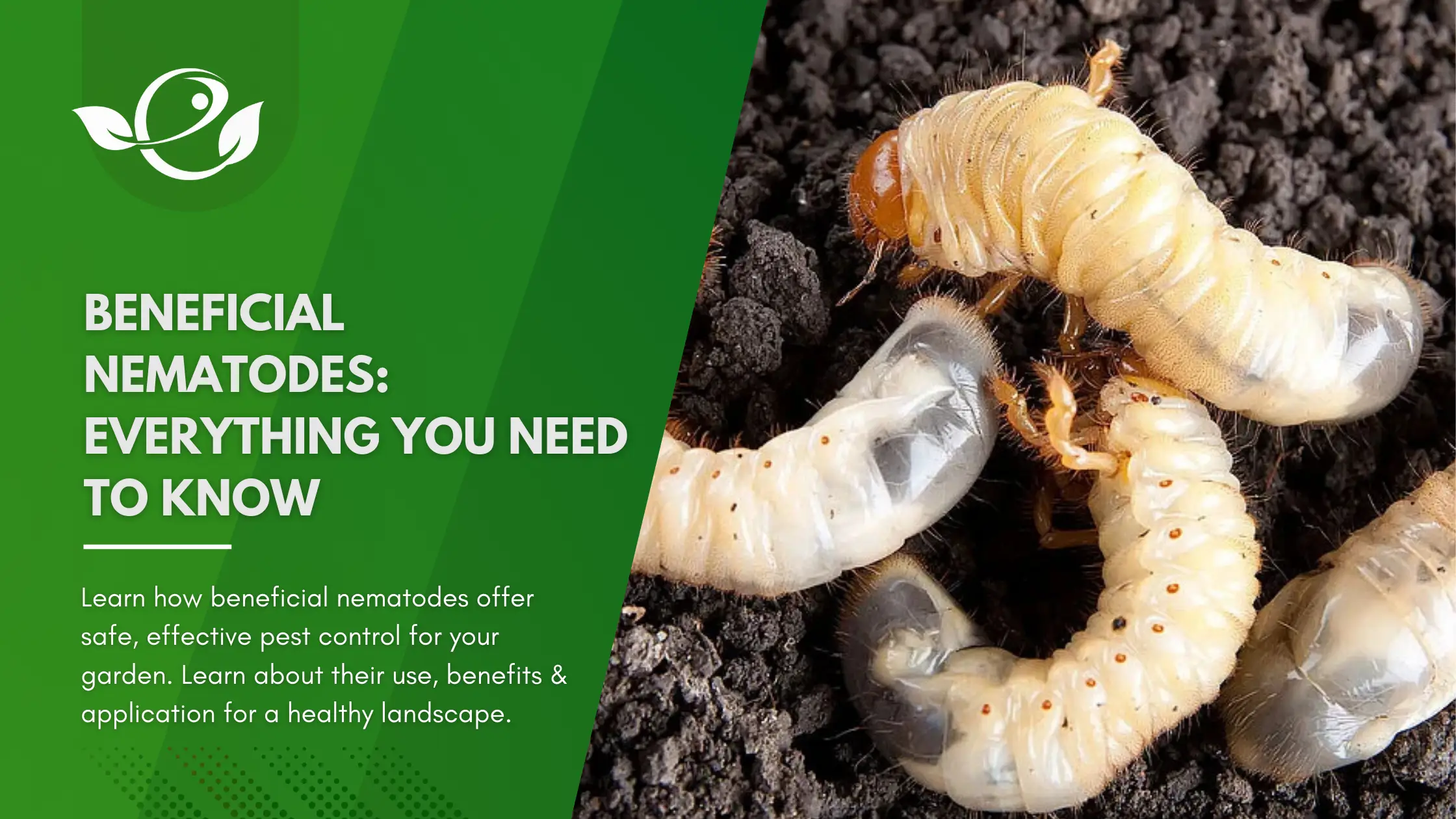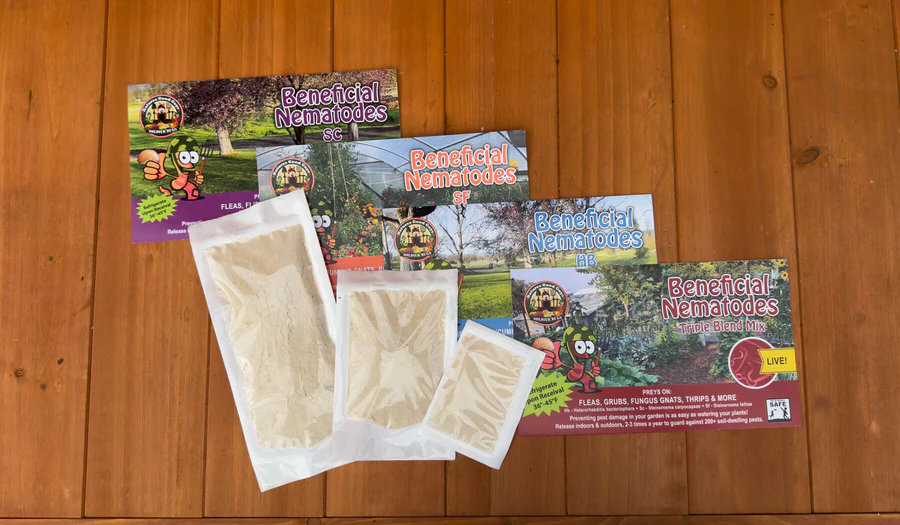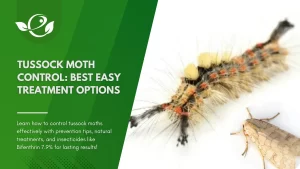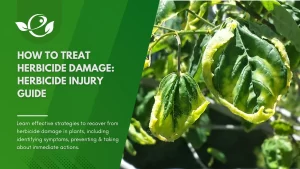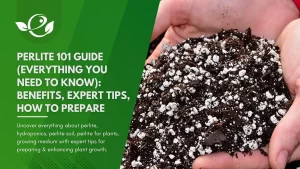Table of Contents
In the world of organic and sustainable gardening, beneficial nematodes have emerged as an invaluable natural solution for pest control. These microscopic, soil-dwelling organisms are powerful allies for gardeners and farmers seeking an environmentally friendly alternative to chemical pesticides. Beneficial nematodes target and eliminate a wide variety of soil-dwelling pests, from grubs to caterpillars, without harming plants, humans, pets, or beneficial insects.
Understanding how these nematodes work, their applications, and best practices can empower gardeners to control pests more sustainably. This guide explores everything you need to know about beneficial nematodes, including the types of pests they control, the advantages they offer, and step-by-step instructions for their effective application. Whether you’re an experienced grower or new to organic gardening, beneficial nematodes can be a transformative addition to your pest management toolkit.
What Are Beneficial Nematodes?
Beneficial nematodes are microscopic, worm-like organisms from two primary genera: Steinernema and Heterorhabditis. These species have evolved to live symbiotically with certain bacteria, which they carry within their bodies. When nematodes find and enter an insect host, they release the bacteria, which multiply and quickly kill the host insect. Unlike their parasitic relatives, which can damage plant roots, beneficial nematodes are entirely safe for plants, humans, and animals.
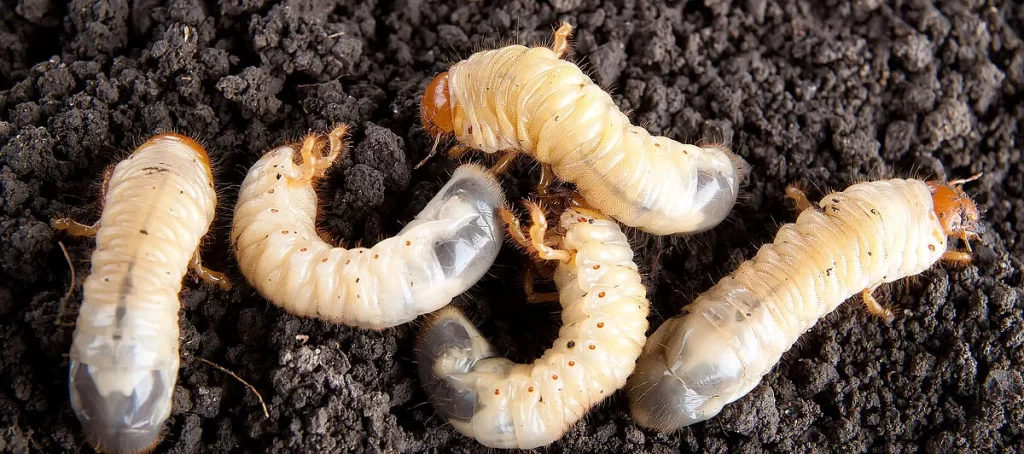
Characteristics of Beneficial Nematodes
- Microscopic Size: Typically around 0.5–1.5 mm long, making them invisible to the naked eye.
- Soil-Dwelling: They naturally inhabit the soil, which allows them to locate and infect soil-dwelling pests effectively.
- Selective Predation: They infect and kill a range of soil pests but are harmless to plants, humans, and animals.
- Symbiotic Bacteria: Beneficial nematodes carry symbiotic bacteria, usually Xenorhabdus (in Steinernema) and Photorhabdus (in Heterorhabditis), which they release into their host’s body, leading to rapid infection and death.
Life Cycle of Beneficial Nematodes
The life cycle of beneficial nematodes has four primary stages:
- Infective Juvenile Stage: The only free-living and soil-dwelling stage, infective juveniles actively seek out insect hosts.
- Invasion: Once they locate a host, nematodes enter through body openings or even by penetrating the body wall.
- Bacterial Release and Reproduction: Inside the host, they release bacteria that kill the insect within 24–48 hours. The nematodes then reproduce within the insect cadaver.
- Emergence of New Juveniles: Thousands of new infective juveniles exit the cadaver and move into the soil to find new hosts.
Key Species of Beneficial Nematodes:
- Steinernema carpocapsae – Effective against fleas, caterpillars, and webworms.
- Heterorhabditis bacteriophora – Targets beetle larvae, root weevils, and white grubs.
How Beneficial Nematodes Work
Beneficial nematodes have a unique life cycle and hunting method. They sense their prey by detecting carbon dioxide and other chemicals insects release. Once they locate a suitable host, they enter through natural openings like the mouth, spiracles, or even penetrate the cuticle. Inside, nematodes release their symbiotic bacteria (usually Xenorhabdus or Photorhabdus), which multiply rapidly, releasing toxins that kill the host within 24-48 hours. The nematodes then reproduce inside the insect’s body, and their offspring leave to hunt for new hosts.
Types of Pests Controlled by Beneficial Nematodes
Beneficial nematodes are particularly effective at controlling a wide range of soil-dwelling insect pests. They work by targeting insects in their larval or pupal stages, making them an invaluable part of integrated pest management strategies. Here’s a comprehensive look at common pests that beneficial nematodes control, categorized by pest type and effective nematode species.
Grubs and Beetle Larvae
Grubs and beetle larvae are among the most destructive soil pests. They feed on plant roots, weakening plants and causing stunted growth, yellowing, and even plant death. Beneficial nematodes, especially species like Heterorhabditis bacteriophora, are highly effective at targeting these pests in the soil.
- Japanese Beetle Grubs (Popillia japonica): Known for feeding on the roots of grasses and plants, these grubs cause brown patches and turf damage.
- June Beetle Grubs (Phyllophaga spp.): These large white grubs are notorious for damaging lawns and pastures.
- European Chafer Grubs (Amphimallon majale): Another turf-destroying pest that can cause extensive root damage in lawns and gardens.
Effective Nematode Species: Heterorhabditis bacteriophora is particularly effective against most types of grubs, especially Japanese beetle and June beetle larvae.
Caterpillars and Moth Larvae
Several caterpillar species cause damage to vegetables, ornamentals, and field crops. Beneficial nematodes, such as Steinernema carpocapsae, are effective against these pests, especially in their larval stage.
- Armyworms (Spodoptera spp.): Attack a wide range of crops, causing significant defoliation and crop loss.
- Cutworms (Agrotis spp.): Known for cutting through seedlings at the soil level, cutworms can devastate young plants.
- Sod Webworms (Crambus spp.): Larvae of small moths that damage turfgrass by feeding on blades and roots.
Effective Nematode Species: Steinernema carpocapsae is particularly effective, as it naturally “ambushes” these caterpillars, which tend to rest near the soil surface.
Root Weevils
Root weevils, including the black vine weevil, are problematic because their larvae feed on the roots of many ornamental plants and crops, weakening and sometimes killing plants.
- Black Vine Weevil (Otiorhynchus sulcatus): Feeds on the roots of a wide variety of ornamental plants and vegetables, causing root damage and weakened plants.
- Strawberry Root Weevil (Otiorhynchus ovatus): Affects strawberry plants as well as other garden plants, reducing plant vigor.
Effective Nematode Species: Both Heterorhabditis bacteriophora and Steinernema kraussei are effective against root weevil larvae, reducing their impact on plant roots.
Fleas and Other Lawn Pests
Fleas can be a persistent issue for lawns and gardens, especially in warmer climates. Beneficial nematodes like Steinernema carpocapsae are an excellent solution for managing fleas, targeting them in their larval and pupal stages in the soil.
- Fleas (Ctenocephalides spp.): The larvae develop in shaded, moist areas where pets and wildlife frequently roam. Treating these areas with nematodes can reduce flea populations naturally.
Effective Nematode Species: Steinernema carpocapsae and Steinernema feltiae are ideal for targeting flea larvae in lawn and soil environments.
Soil-Borne Fly Larvae
Many fly larvae, including those of fungus gnats and crane flies, inhabit soil and organic matter, making them vulnerable to nematodes.
- Fungus Gnats (Bradysia spp.): The larvae feed on decaying organic matter and plant roots, especially in greenhouse and indoor plant environments.
- Crane Fly Larvae (Tipulidae spp.): Often called “leatherjackets,” these larvae damage grass roots, leading to patches of dead grass.
Effective Nematode Species: Steinernema feltiae is especially suited for fungus gnat larvae, while Heterorhabditis bacteriophora can target crane fly larvae effectively.
Borers and Wood-Burrowing Insects
Borers and wood-burrowing insects, although harder to target, can still be impacted by nematodes when their larvae are in the soil or in early life stages.
- Peachtree Borer (Synanthedon exitiosa): A pest of stone fruits, the larvae burrow into the tree base, weakening and often killing the plant.
- Pine Weevil (Hylobius abietis): Targets coniferous trees, especially in nurseries and young plantations.
Effective Nematode Species: Steinernema carpocapsae has shown effectiveness against borers when applied directly to affected areas in moist conditions.
Lawn and Turf-Specific Pests
Lawn pests, like billbugs and sod webworms, can cause extensive damage to grass and turf. Nematodes offer a safe solution for targeting these pests below the soil surface.
- Billbugs (Sphenophorus spp.): These pests chew grass stems and roots, causing patches of dead grass in affected areas.
- Sod Webworms (Crambus spp.): They are particularly damaging to lawns, leaving dead spots across the turf.
For a quick reference, here’s a summary chart of pests and the most effective beneficial nematode species:
| Pest Type | Common Pests | Effective Nematode Species |
|---|---|---|
| Grubs and Beetles | Japanese Beetles, June Beetles | Heterorhabditis bacteriophora |
| Caterpillars and Moths | Armyworms, Cutworms | Steinernema carpocapsae |
| Root Weevils | Black Vine Weevil, Strawberry Weevil | Heterorhabditis bacteriophora |
| Fleas and Lawn Pests | Fleas | Steinernema carpocapsae |
| Fly Larvae | Fungus Gnats, Crane Flies | Steinernema feltiae |
| Borers and Wood Borers | Peachtree Borer, Pine Weevil | Steinernema carpocapsae |
| Lawn and Turf Pests | Billbugs, Sod Webworms | Steinernema carpocapsae |
Benefits of Using Beneficial Nematodes
Using beneficial nematodes offers multiple advantages compared to chemical pesticides, particularly for organic gardeners and environmentally conscious pest control.
Environmentally Friendly
- Non-Toxic: Nematodes are harmless to humans, pets, and wildlife, including beneficial insects such as bees and butterflies.
- Biodegradable: They decompose naturally in the soil, contributing to a healthier ecosystem without leaving chemical residues.
Effective Pest Control
- Targeted Action: Beneficial nematodes exclusively target soil-dwelling pests, making them highly effective for pests that reside in the soil.
- Quick Action: They can kill pest insects within 24–48 hours, offering rapid pest reduction.
- Prevention and Suppression: By naturally reproducing in the soil, nematodes can help maintain low pest levels over time, acting as both a curative and preventative pest control solution.
Cost-Effective and Sustainable
- Cost Savings: Nematodes reproduce in soil, providing ongoing pest control after a single application, which can reduce the need for repeat treatments.
- Compatibility with Other Controls: They can be used alongside other pest control methods, like trap cropping or companion planting, to create a sustainable integrated pest management system.
How to Apply Beneficial Nematodes
Proper application ensures beneficial nematodes can locate and infect target pests effectively.
Timing and Environmental Conditions
- Ideal Timing: Apply nematodes in the early morning or late evening to avoid direct sunlight, which can harm them.
- Temperature: Soil temperatures should ideally be between 55°F and 85°F for maximum effectiveness.
- Moisture: Nematodes require moist soil to move and locate hosts. Water the soil before and after application if it’s dry.
Step-by-Step Application Guide
- Preparation: Open the package of nematodes and mix it with water as per instructions. Use a watering can, garden sprayer, or hose-end sprayer for distribution.
- Dilution: Follow dilution guidelines carefully, as too high or too low a concentration can impact effectiveness.
- Application: Pour or spray the mixture evenly across the soil surface, focusing on areas with known pest activity.
- Post-Application: Lightly water the treated area again to help the nematodes penetrate deeper into the soil.
Frequency of Application
Depending on pest populations, apply nematodes:
- Seasonally: In spring and fall, when pest populations are high.
- Monthly: In cases of severe infestations, monthly applications may be required until the pest population reduces.
Where to Buy Beneficial Nematodes
Beneficial nematodes are available from garden centers and online retailers. When purchasing, look for fresh nematodes with clear packaging instructions. They typically range in price, depending on the quantity and species. Some popular suppliers include Arbico Organics, Nature’s Good Guys, and other specialized online stores.
Best Practices for Using Beneficial Nematodes
To optimize nematode effectiveness, adhere to these best practices:
Storage Tips
- Refrigeration: Store nematodes in a cool place, ideally a refrigerator, but avoid freezing. Nematodes have a limited shelf life and can die if improperly stored.
- Shelf Life: Always check expiration dates and use fresh nematodes for best results, as older nematodes may lose potency.
Soil Preparation
- Moisture Levels: Keep soil consistently moist before, during, and after application to allow nematodes to move through the soil and reach pests.
- Organic Matter: Soil with high organic matter supports nematode activity, as pests are often more abundant in these areas.
Avoiding Chemicals
- Chemical Pesticides: Avoid using chemical insecticides for at least two weeks before and after nematode application, as many insecticides can kill or weaken beneficial nematodes.
- Fertilizers: Avoid excessive nitrogen fertilizers, as they can disrupt soil balance, making it harder for nematodes to survive.
Common Myths and Misconceptions about Beneficial Nematodes
While beneficial nematodes are increasingly popular, several misconceptions persist.
1. “Nematodes Are Harmful to All Plants”
Truth: Beneficial nematodes specifically target insect pests and do not feed on plants. Unlike plant-parasitic nematodes, beneficial species only infect insect larvae and are harmless to plant roots.
2. “Beneficial Nematodes Only Work Instantly”
Truth: Nematodes require time to locate, enter, and kill hosts. While many pests die within 24–48 hours, it can take several days for the nematode population to fully control an infestation.
3. “Once Applied, Nematodes Are Permanent”
Truth: Nematode populations decline if no pest hosts are present. Reapplication may be necessary, particularly in pest-prone areas or under challenging environmental conditions.
4. “Nematodes Are Visible to the Naked Eye”
Truth: Nematodes are microscopic. Although they cause noticeable results, they themselves are not visible without magnification.
Potential Drawbacks and Limitations
Despite their benefits, beneficial nematodes have limitations that users should consider.
Environmental Sensitivity
- Sunlight and UV Exposure: UV light from direct sunlight can kill nematodes quickly, so applying them during overcast conditions or early morning/evening is essential.
- Temperature Sensitivity: Nematodes perform best in moderate soil temperatures (55°F to 85°F) and may be ineffective in extreme cold or heat.
Target Limitations
- Restricted to Soil: Nematodes primarily target soil-dwelling pests and are not effective against above-ground insects like aphids, whiteflies, or beetles on plant surfaces.
- Limited Range of Action: Since nematodes move through the soil, they may not reach all pests in a large area unless evenly distributed.
Need for Reapplication
- Pest Reinfestation: Nematodes may not fully eradicate pests, particularly in heavy infestations. Regular applications might be needed to manage ongoing pest populations.
- Susceptibility to Chemical Interference: Nematodes can be killed by certain chemical pesticides, so integrating them into a chemical-free pest management strategy is important for success.
Conclusion
Beneficial nematodes are a natural, effective solution for managing soil-borne pests, offering numerous advantages over traditional chemical pesticides. They bring pest control back to nature, providing a safe, sustainable, and long-lasting approach that benefits both your plants and the surrounding environment. By understanding their life cycle, selecting the right species, and applying them under optimal conditions, you can harness the power of beneficial nematodes to improve garden health and pest resistance naturally.
With their ability to target pests precisely without impacting plants or beneficial organisms, beneficial nematodes align perfectly with the principles of organic gardening. While they may have limitations and specific application requirements, their long-term benefits far outweigh these challenges. Whether you’re managing a vegetable garden, lawn, or ornamental plants, beneficial nematodes can help you maintain a thriving, resilient landscape.
